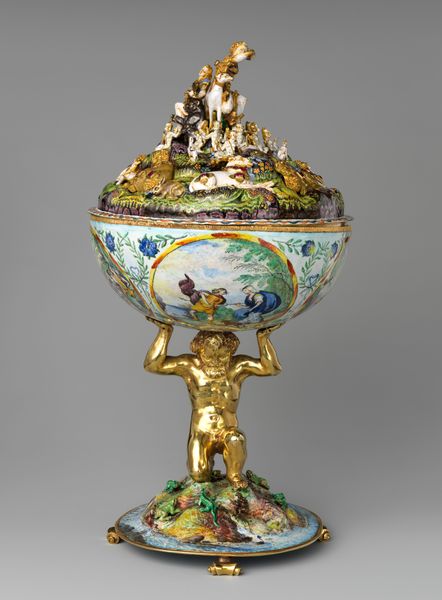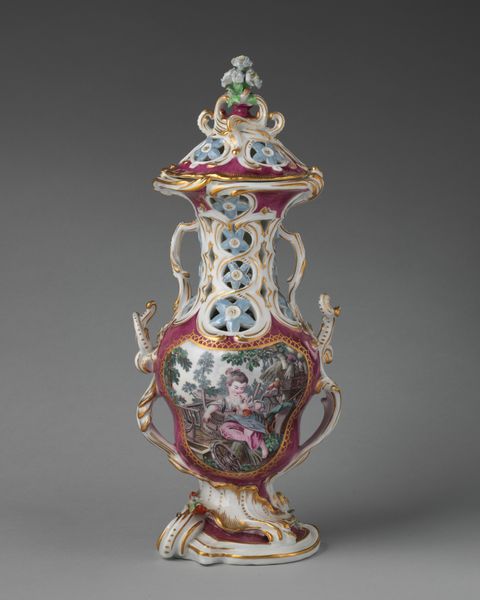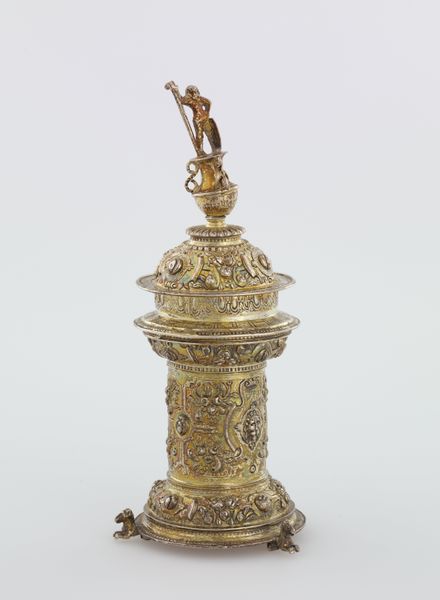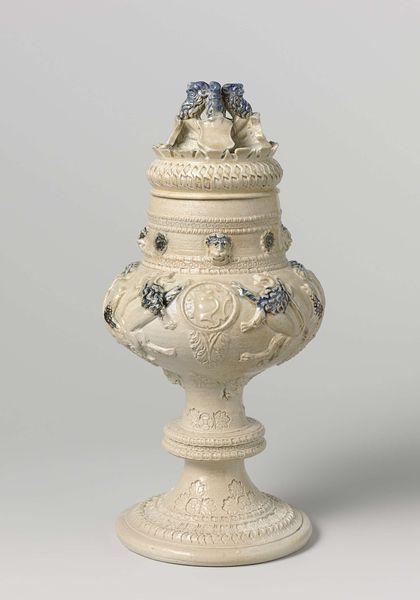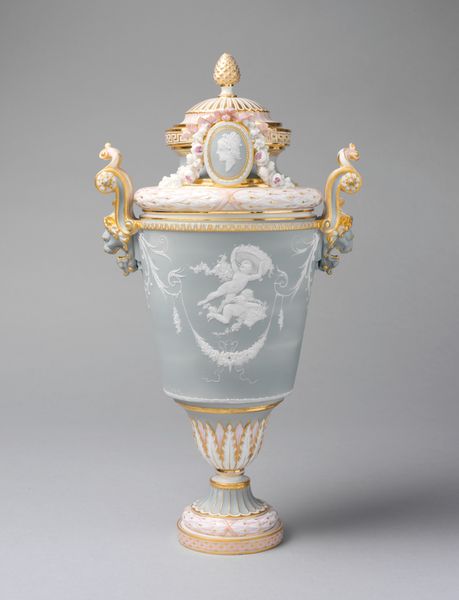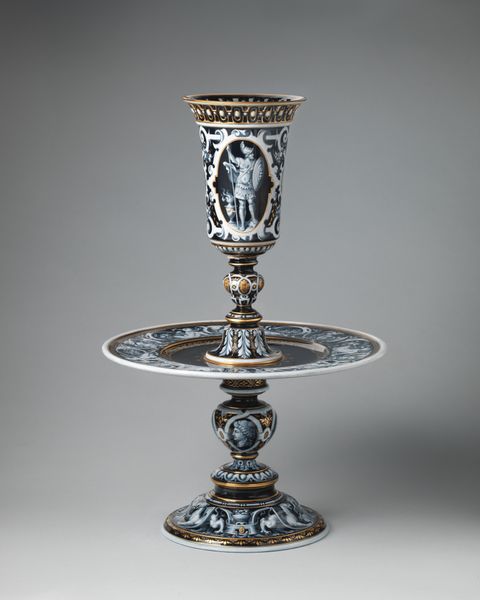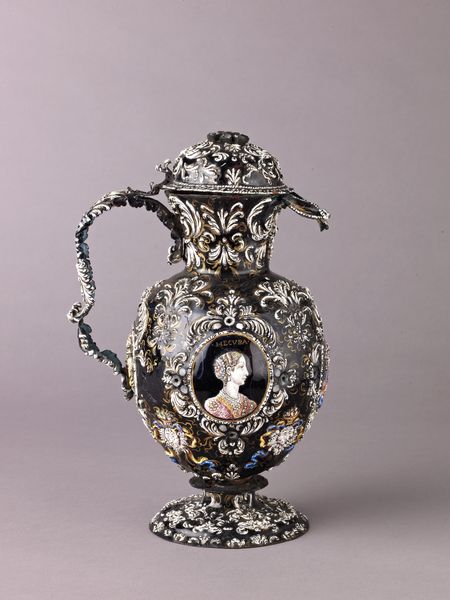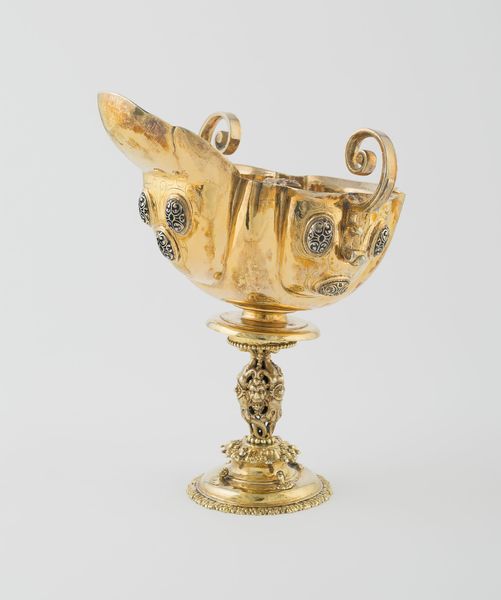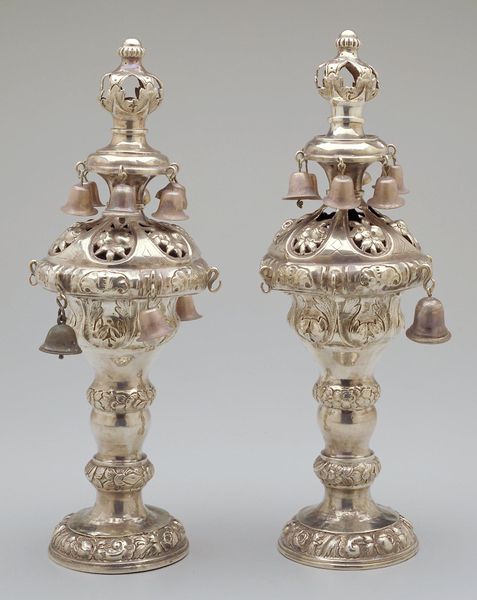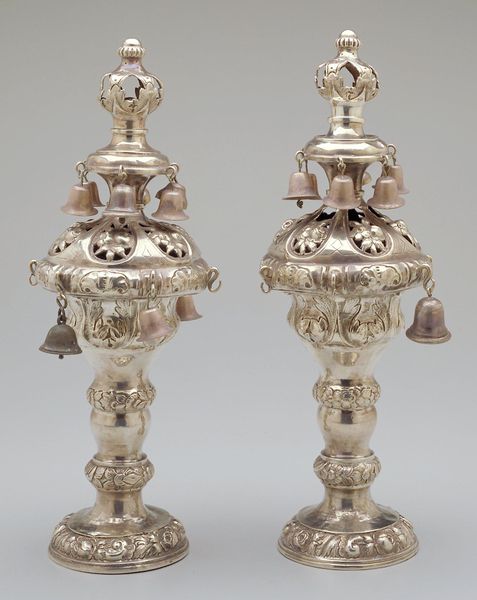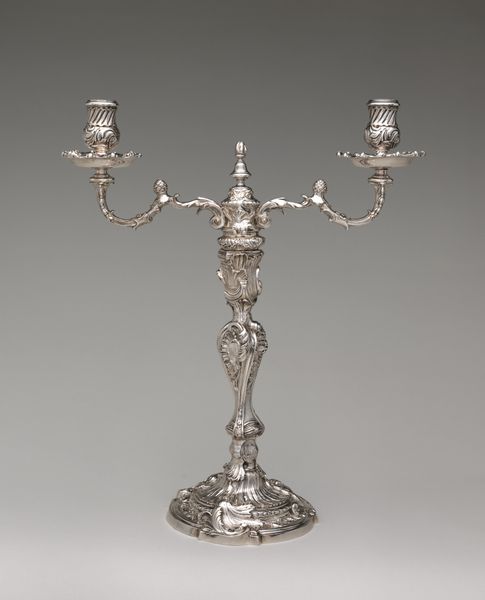
ceramic, porcelain, sculpture
#
baroque
#
ceramic
#
jewelry design
#
porcelain
#
sculpture
#
ceramic
#
decorative-art
Dimensions: Overall (assembled confirmed): 24 1/2 x 18 1/8 x 16 1/2 in. (62.2 x 46 x 41.9 cm); Other (54.147.65 a (fountain)): 13 1/4in. (33.7cm); Other (54.147.65 b (plinth)): 11 5/16 x 10in. (28.7 x 25.4cm); Other (basin confirmed): 3 1/8 x 18 3/8 x 13 5/8 in. (7.9 x 46.7 x 34.6 cm)
Copyright: Public Domain
Editor: Here we have "Fountain and Basin" created sometime between 1722 and 1737 by the Meissen Manufactory. It's crafted from porcelain and currently resides at the Metropolitan Museum of Art. It strikes me as an ostentatious display of wealth and technical skill. What stands out to you? Curator: Considering its porcelain construction, it prompts questions about the socioeconomic conditions of its making. Who were the artisans involved in its production, and what were their labor conditions? How does the preciousness of porcelain factor into its consumption, its intended audience, and the message it conveys about power? Editor: That’s interesting. I hadn't thought about the factory workers involved. It looks so delicate; what skills were needed? Curator: Exactly! The intricate modeling and painting of the porcelain body demonstrate significant specialized knowledge and artisanal skill. Furthermore, the baroque aesthetic and function as a fountain and basin can indicate social display rituals for upper-class consumers. It also reflects broader trade networks associated with raw material acquisition and market distribution in that time. Editor: So, you're saying the fountain isn't just beautiful but is evidence of economic and social forces at play? How different is it, say, from other porcelain works, as a result? Curator: Absolutely. Considering its size and complexity, compared to functional ceramics like tableware produced simultaneously, one may observe varying degrees of craft and aesthetic differentiation correlated with differing values in particular social segments. Can we ascertain information concerning porcelain commodity chains—including sources used for glaze versus base and whether the item has been duplicated through factory-based processes, and their markets of sale, so we can analyze labor? Editor: That definitely shifts my perception! Looking beyond the aesthetics to the labor and economic forces gives it new depth. Thanks for pointing that out! Curator: Precisely! By scrutinizing the materiality of porcelain—from the mining of raw materials to the application of glazes—this challenges traditional artistic interpretations focusing solely on aesthetics.
Comments
No comments
Be the first to comment and join the conversation on the ultimate creative platform.
